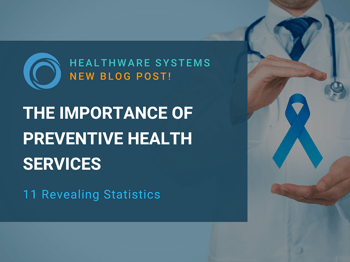4 Ways to Build a Culture of Patient Advocacy at Your Facility
HealthWare Systems Blog
4 Ways to Build a Culture of Patient Advocacy at Your Facility
Posted on Wednesday, February 6, 2019
How can a healthcare facility practice patient advocacy? Of course, patient advocates offer wonderful support to patients. But providers can create a larger culture of patient advocacy at their facility as well by tackling a few key areas.
Here are 4 ways hospitals can support their patients and build a culture of patient advocacy:
1.) Address The Social Determinants of Health

Create a culture of patient advocacy with Patient-First Technology like ActiveASSIST.
The American College of Physicians states that addressing the social determinants of health “is a critical step forward in solidifying physicians’ roles as advocates for patients.” You can supply your physicians with screening tools and training to help them identify patients’ social needs and how these may be affecting their health.
Additionally, your organization can do its part in addressing the social determinants of health in your community. For example, you may be able to reduce patient malnutrition, ease patient transportation needs, or assist with patient housing needs.
Supporting your patients’ social needs is an incredible form of patient advocacy. It can also lead to better health outcomes and lower healthcare costs for your facility.
2.) Offer Financial Assistance Screening
A lot of patients don’t realize that financial assistance may be available to them. Many hospitals have changed their financial assistance policies to include not only the uninsured, but the underinsured as well.
Notifying patients of which programs they could qualify for demonstrates a great deal of patient advocacy. What really goes above and beyond, though, is facilitating the entire financial assistance process on behalf of your patients!
Technology like HealthWare Systems’ ActiveASSIST and Facilitator can both identify programs applicable to specific patients AND manage the financial assistance workflow.
By exhausting all other payment options first, you also ensure the provider is payer of last resort.
3.) Alleviate Stressors Surrounding Costs and Payment
Larger-than-expected or difficult-to-decipher medical bills, as well as health insurance confusion, are major sources of frustration for patients. They can also result in unpaid medical bills and medical debt, or cause patients to forgo some health services altogether.
Reducing patient uncertainty concerning the financial aspects of their care would help you foster a culture of patient advocacy. Ensuring patients are financially cleared before arrival, generating estimates and identifying potential out-of-pocket costs, and setting up payment plans are all ways you can assist patients in this area.
4.) Provide Patient Education
February is National Wise Health Care Consumer Month!
What a perfect time to share educational materials and classes related to health insurance and financial assistance with your patients. Perhaps the best way to advocate for your patients is to help them develop the skills they need to advocate for themselves!
Each of these areas provides you with excellent opportunities for patient advocacy. Plus, there is a bonus: supporting any of these endeavors can ultimately improve your bottom line as well.
Practicing patient advocacy will help you support your patients, improve the patient experience, and offers financial benefits for all parties involved. Developing a culture of patient advocacy can truly pay dividends.
#socialdeterminantsofhealth #financialassistance #thesocialdeterminantsofhealth #patientadvocacy #cultureofpatientadvocacy #determinantsofhealth

